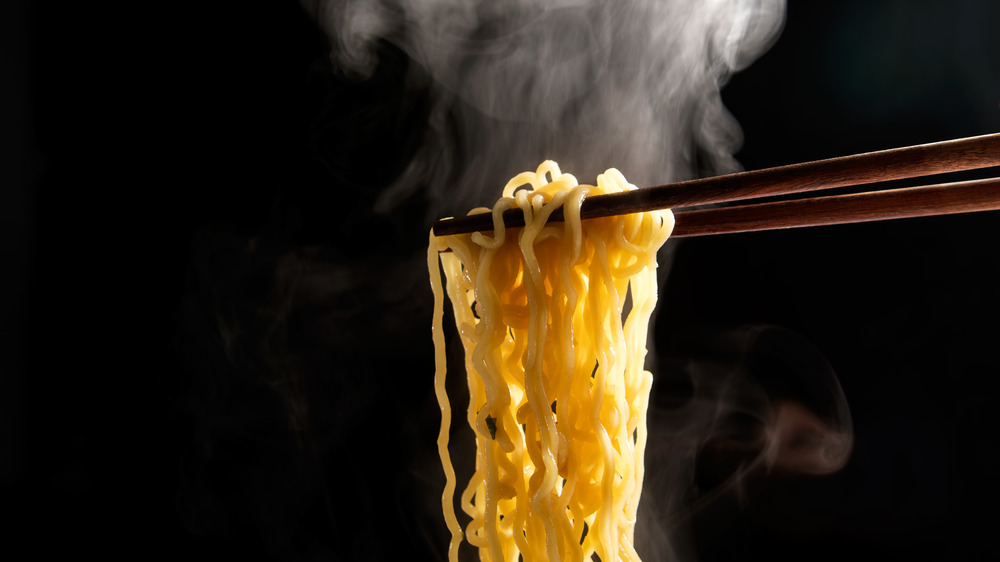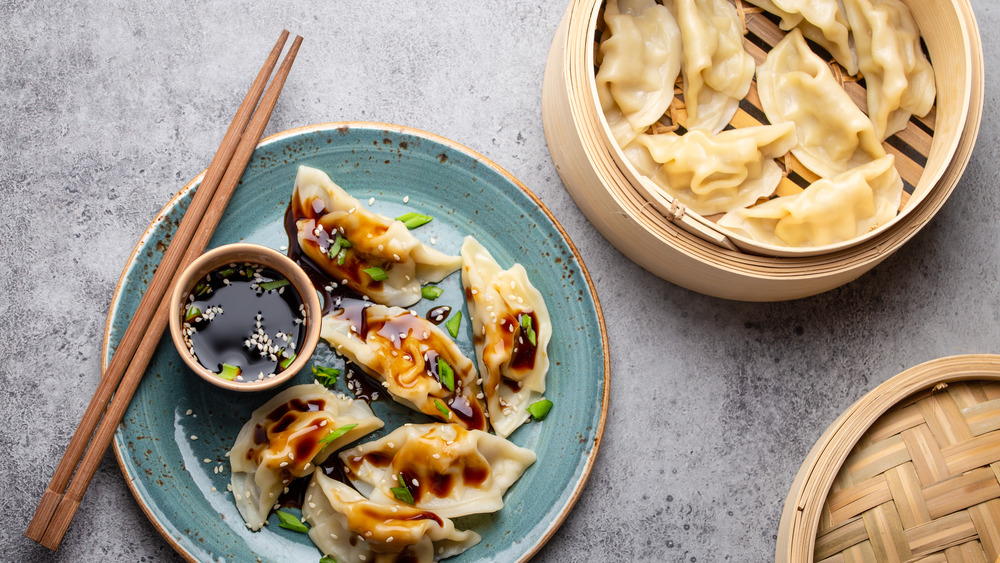Here's Why You Should Be Using Chopsticks To Cook
They are easy to typecast, mainly because you only see them playing supporting roles in Chinese, Japanese, or Thai meals (and only if you choose to forgo the ubiquitous fork-spoon-and-knife trio). But like their Western utensil counterparts, bamboo chopsticks are much more functional than they first appear, which means getting to know them better makes it easy to understand why most Asian cooks can't live without these tools.
Because of the way dishes are cooked, a Western kitchen won't look much like an Asian kitchen. There are utensils like woks, wok spatulas, bamboo steamers, meat cleavers, and rice cookers as well as stove hobs capable of reaching inferno-levels of heat (via China Highlights). In this world, chopsticks serve as a multi-purpose utensil, bringing together fork, spoon, ballon whisk, and tongs. A pair of chopsticks allows a cook to whisk eggs, mix dough, dip battered and breaded seafood into searing hot oil, as well as fish them out without breaking a sweat.
Cooks can't go wrong with having two pairs of chopsticks to cook with
Most Asian chefs will own two types of cooking chopsticks — regular ones you find at most Asian restaurants — as well as longer ones which can be measure between 14 to 16 inches. Cookbook author Kian Lam Kho tells Kitchn that chopsticks are the kitchen tool chefs didn't think they needed because they are so versatile. "You can use them in many situations. Yes, you still need your spatula and your spoon to cook, but if you need to be a little more precise, chopsticks are important — you can really pinpoint what you want to handle."
Asian chefs like Kho will have a long pair of bamboo chopsticks on hand that aren't too fancy — the Japanese chefs call them saibashi — which they use to plate food, and to retrieve bits of deep-fried treats like Japanese tempura. As an added bonus, chopsticks allow food to drain off extra oil, too.
There is one more task you can carry out with cooking chopsticks: Kho says that's to use them to grab the last piece out of a jar or a container, particularly in cases when a regular Western utensil might be too challenging to use. Just remember not to mix your chopsticks: If you've used your pair to beat eggs for instance, don't turn around and use them to plate cooked food, to avoid any risk of salmonella or food poisoning (via CDC).

